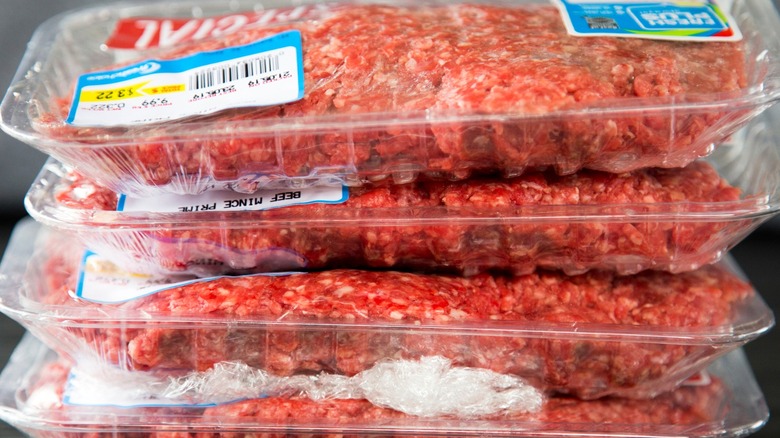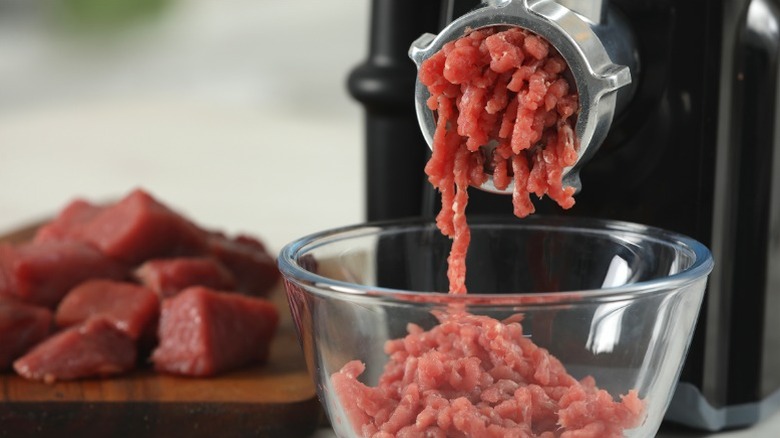The Problem With Prepackaged Ground Beef (And How To Fix It)
We may receive a commission on purchases made from links.
With some grocery store items, packaging can make all the difference. Take ground beef. Most ground beef you find at the store comes in a foam tray with plastic wrapped over the top. The downside is that it allows room for oxygen, meaning you'll have to use it within a couple of days if it's not going in the freezer. Other types of packaging will replace the oxygen with carbon dioxide and nitrogen, or they'll be sealed air-tight without spare room for any gases. All of these considerations just for a slab of ground meat that won't taste like your restaurant-favorite burgers, anyway? The key to better beef is closer than you'd think.
A frequent mistake when buying ground beef is considering the pre-packaged options your only choice. They often don't specify what parts of the cow are being used, so it's a toss-up on what kind of flavor to expect every time. It's doubtful the manufacturers are throwing in the tastiest prime cuts for those prices. For better quality control, you can select whichever whole cuts of beef you want at the grocery store and ask the butcher to grind them. Alternatively, you can try grinding the beef yourself at home.
Prepare ground beef at home with these kitchen tools
The advantage of grinding your own beef is being able to choose the fat-to-lean meat ratio. Gordon Ramsay's go-to combo for his burgers is using 80% lean with 20% fat. Aside from trimmings, chuck is the most common type of ground beef. Lean cuts like chuck, sirloin, and round make a good base but might lack a level of decadent fattiness on their own. They'll need to be supplemented with fatty cuts like brisket and short rib to achieve the coveted gourmet-style burger taste.
There are two optimal machines for beef grinding, with the first being the traditional meat grinder. A hand-crank grinder like the Kitchen Basics 3-in-1 will be the least expensive, but there are more convenient options like the KitchenAid KSMMGA that work as an electric mixer attachment. Feel free to splurge on fancier machines, but for the casual home cook, these budget-friendly tools can get the job done.
The second type of kitchen tool you'll want to use for grinding meat is a food processor like the Hamilton Beach Stack & Snap. Food processors still pack a punch, so you'll want to cut your chilled steak into cubes before dropping it in the bowl. You're looking for wavy, not liquified, meat. All it takes is 10 pulses to achieve the ideal ground beef consistency.

